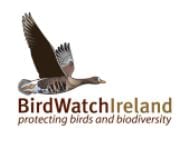Dublin Port seems an unlikely place to find a thriving tern colony. Yet, tucked within this industrial landscape, beneath towering cranes and in the wake of passing cargo ships, hundreds of fledglings take to the wing each season.
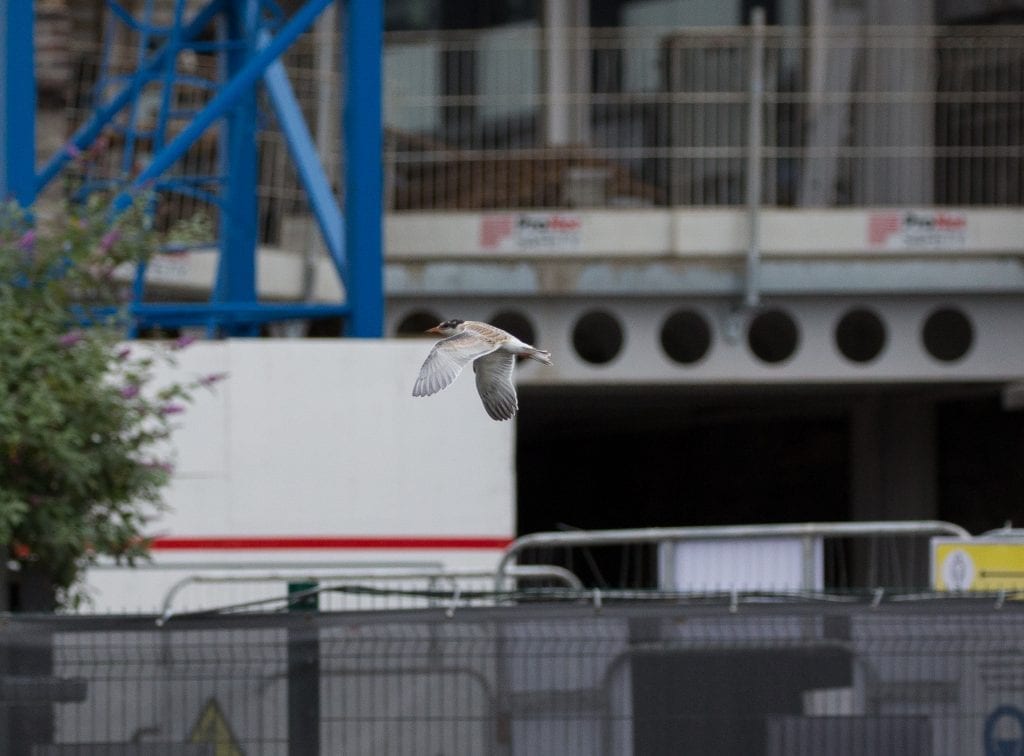 Common Tern fledgling (Kevin Maguire)
Common Tern fledgling (Kevin Maguire)
As the light fades, and evening falls, these fledglings take their place among the large aggregations of terns which congregate on Irish shores from mid-August to mid-September. At the time of writing these birds have begun their southward journey, with Common Terns migrating to west and south-west Africa, and Arctic Terns southbound to Antarctica.
 Mixed tern and gull flock on Sandymount Strand (Dick Coombes)
Mixed tern and gull flock on Sandymount Strand (Dick Coombes)
In the past, their departure typically spelled the end of our interaction with these seabirds until the revolving door of the breeding season whirled them back onto the Dublin Port breeding colony. However, in 2015 the Dublin Bay Birds Project (DBBP), with support from Dublin Port Company (DPC), began a colour ringing project. These colour rings are inscribed with a unique code which can be read in the field, and allow us to identify individual birds.
To date, over 1,000 Common and Arctic Tern chicks have been colour ringed in Dublin Port. In addition, over 200 fledgling and adult terns have been colour ringed at Sandymount Strand in Dublin Bay.
 Common Tern fledgling (John Fox)
Common Tern fledgling (John Fox)
Resightings of these colour rings has begun shedding some light on the migratory movements of DBBP colour ringed Common Terns. For instance, we know that at least a small portion of Common Terns ringed by the DBBP, stop-over in Cadiz, Spain while migrating south.
 Common Tern fledgling in Cadiz, Spain (Carmela Quijano)
Common Tern fledgling in Cadiz, Spain (Carmela Quijano)
Ring resightings have also confirmed the significance of Africa’s western and south-western coast to Common Terns during the non-breeding season. Thus far, we have received resightings of Common Terns from Mauritania, Senegal, The Gambia, and Namibia.
 Common Tern in Senegal (Kebba Sosseh)
Common Tern in Senegal (Kebba Sosseh)
These resightings feed into a broader understanding of the Common Terns annual cycle. This is critically important to conservation efforts for this species. The only way to effectively protect any long distance migrant is to; (a) understand those areas which are important during migration and the breeding season, (b) to identify any threats which exist at these sites and, (c) to develop strategies to mitigate these threats.
Due principally to the small number of Arctic Terns breeding in Dublin Port, comparatively few Arctic Terns have been colour ringed. This perhaps explains the lack of resightings we have received of this species on migration.
 Arctic Tern (Jan Rod)
Arctic Tern (Jan Rod)
However, thanks to the construction of a hide in Dublin Port by DPC in 2019, we are beginning to understand local population dynamics for this species. For instance, we have established population exchange occurs between the Dalkey islands in Dublin Bay and the Dublin Port colony. We have also recorded natal fidelity, i.e. the return of individuals to breed at the site at which they hatched. Both fidelity and dispersal to a site are critical to the long-term survival of a colony.
 Observation hide on a breeding structure in Dublin Port (Helen Boland)
Observation hide on a breeding structure in Dublin Port (Helen Boland)
An Arctic Tern, colour ringed by the DBBP in 2016 on Sandymount Strand, was resighted at a Dutch breeding colony in 2018. This provides evidence that the terns which form post breeding aggregations in Dublin Bay, are drawn not only from local populations, but also from populations outside of the island of Ireland.
This is supported by resightings of Common Terns colour ringed by the DBBP team at Sandymount Strand. A number of these birds have been spotted in England, Wales, Scotland, and Denmark. This indicates that Dublin Bay is important both as a breeding and migratory staging site for tern species.
 Mixed Common and Little Tern flock (Jan Rod)
Mixed Common and Little Tern flock (Jan Rod)
Three years after the colour ringing of chicks at Dublin Port began, resightings of these birds at breeding colonies started to filter in. This was bang on cue, as Common Terns typically begin to breed at three years of age. To date, we have received reports of these birds at six colonies across Ireland, Wales, and England. Once more these resightings reinforce the interconnectedness of tern colonies and the importance of protecting this species across multiple sites.
 Colour ringed Common Tern pair at Grand Canal Dock (Kevin Maguire)
Colour ringed Common Tern pair at Grand Canal Dock (Kevin Maguire)
Colour ringing enables us to measure how tern populations which are separated by distance interact with one another. These interacting populations are part of one overarching population, known as the metapopulation. Conservationists are increasingly looking at the metapopulation when assessing how best to protect long distance migrants such as tern species. Through resightings we are beginning to understand how both the Dublin Port colony and the terns present in Dublin Bay during post-breeding aggregations fit into this broader picture, which in turn feeds into conservation efforts at the macro scale.
Gathering this information isn’t possible without the people on the ground who have so generously spent their time recording rings in the field and sending the reports our way. Thus, the DBBP team would like to take this opportunity to thank all of the ring readers who have contributed to this project. We literally couldn’t do it without you.
Many thanks,
Tara Adcock, Helen Boland and Ricky Whelan.

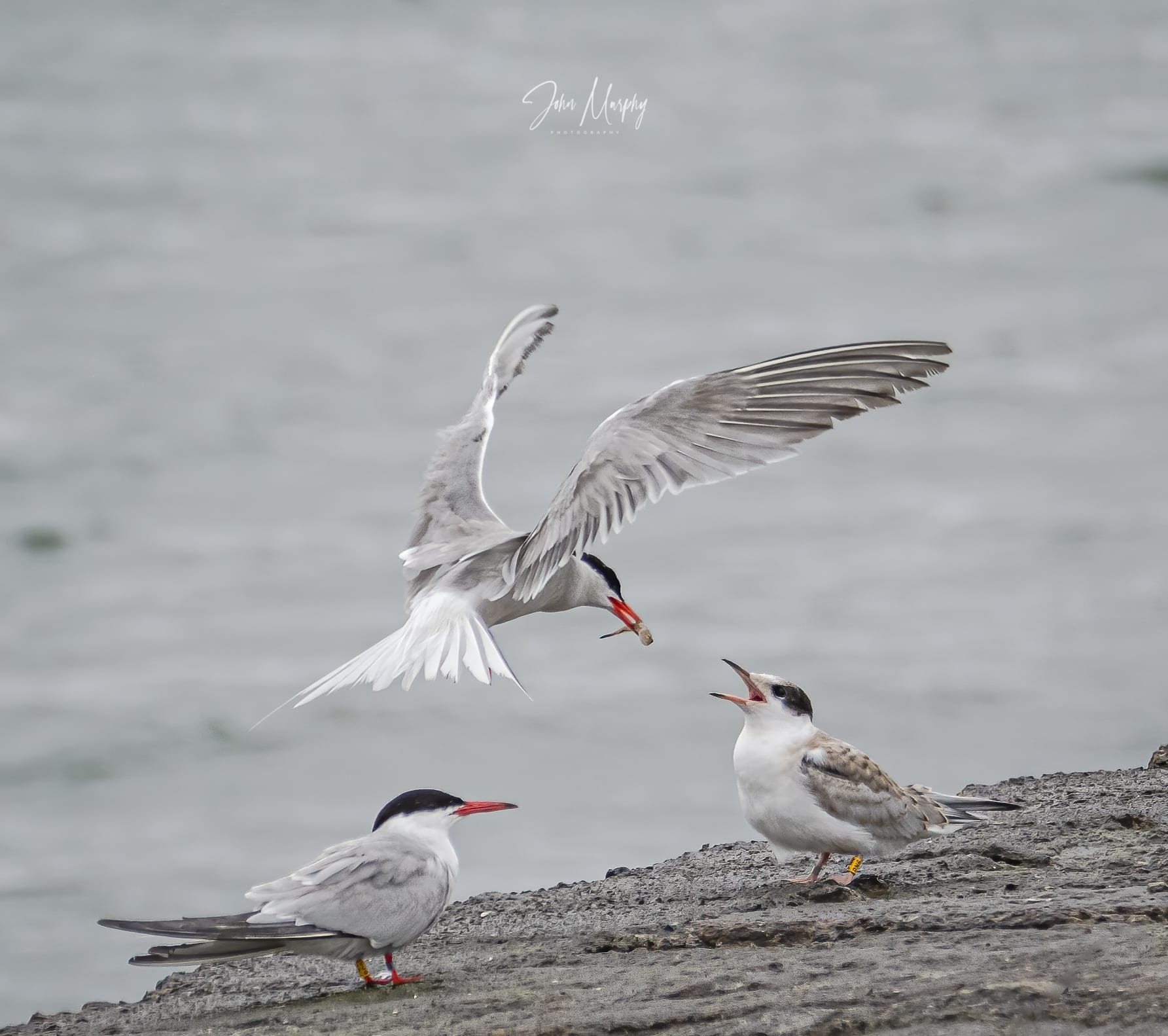
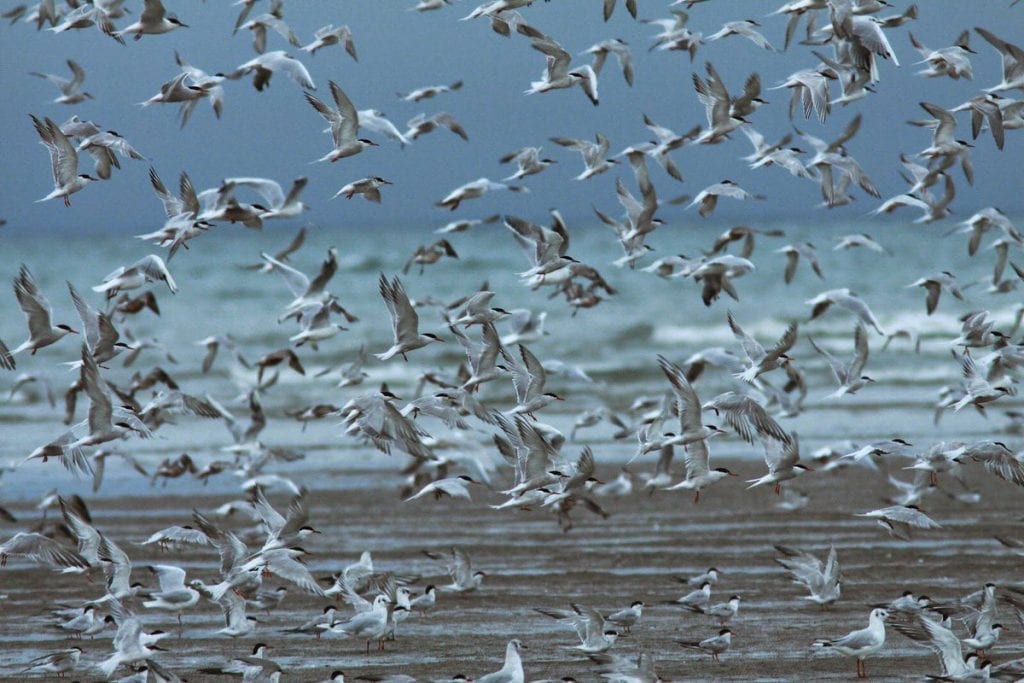 Mixed tern and gull flock on Sandymount Strand (Dick Coombes)
Mixed tern and gull flock on Sandymount Strand (Dick Coombes)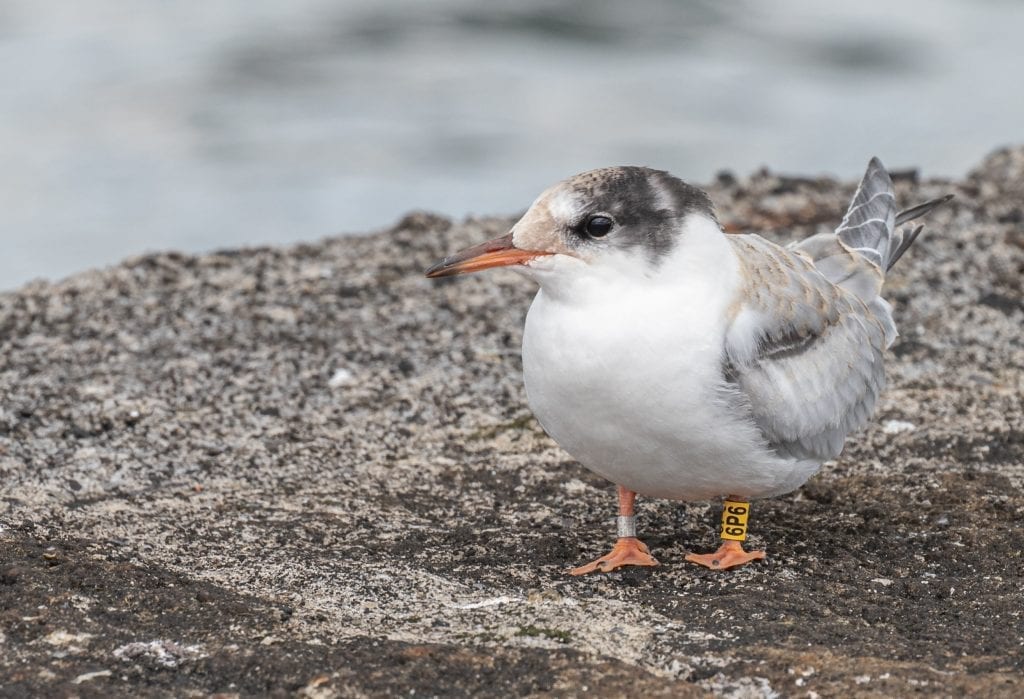 Common Tern fledgling (John Fox)
Common Tern fledgling (John Fox)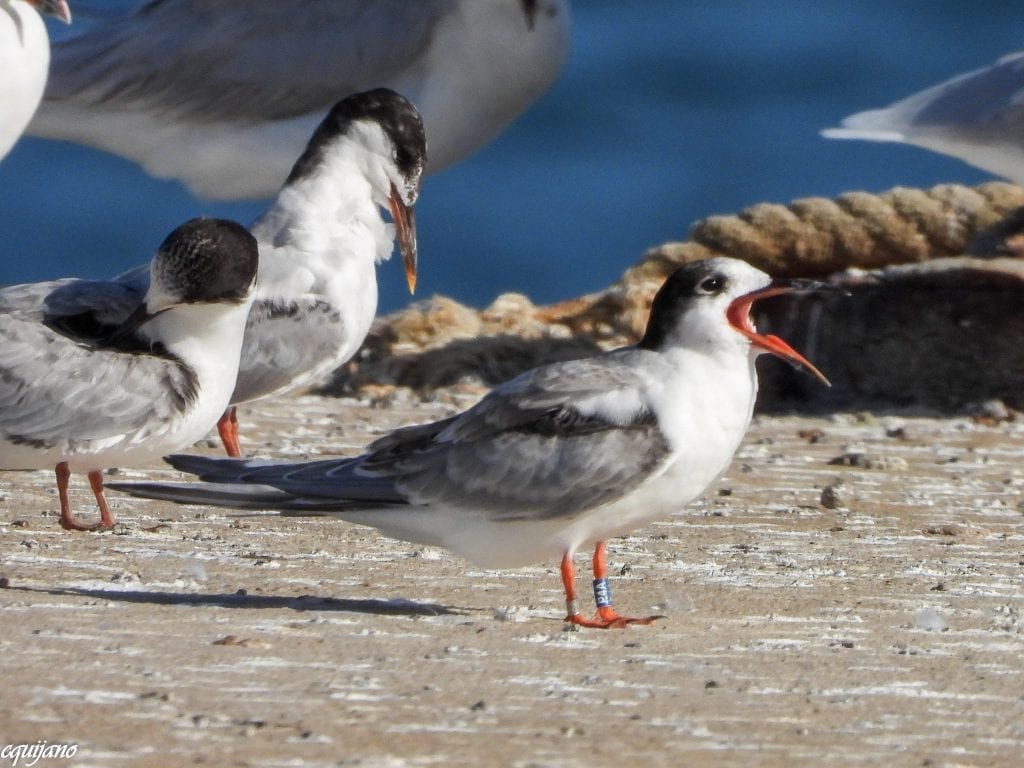 Common Tern fledgling in Cadiz, Spain (Carmela Quijano)
Common Tern fledgling in Cadiz, Spain (Carmela Quijano)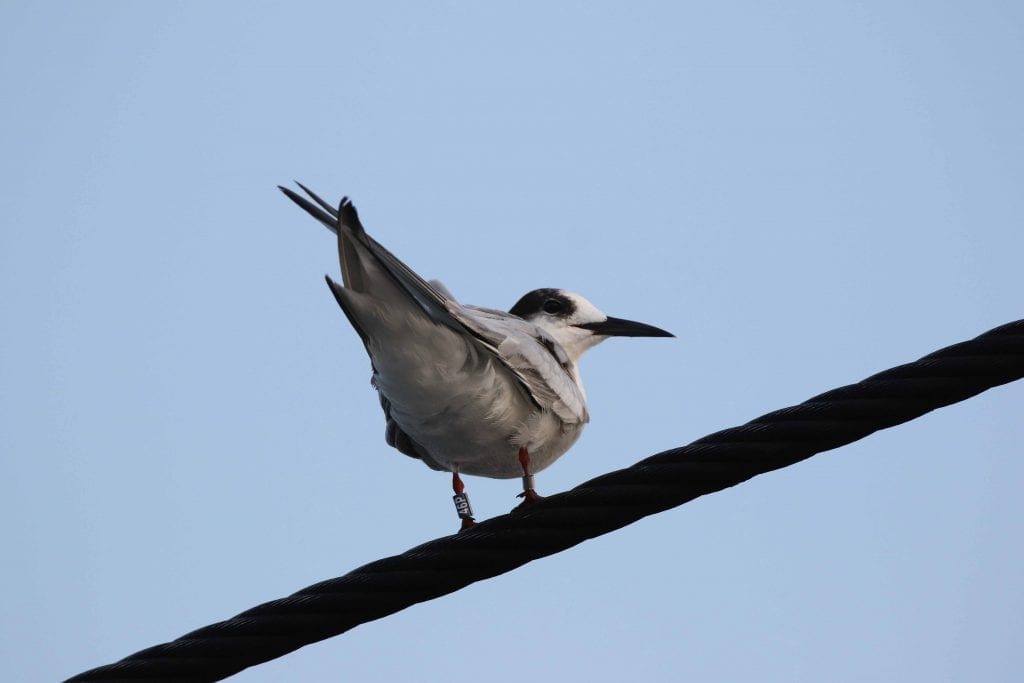 Common Tern in Senegal (Kebba Sosseh)
Common Tern in Senegal (Kebba Sosseh)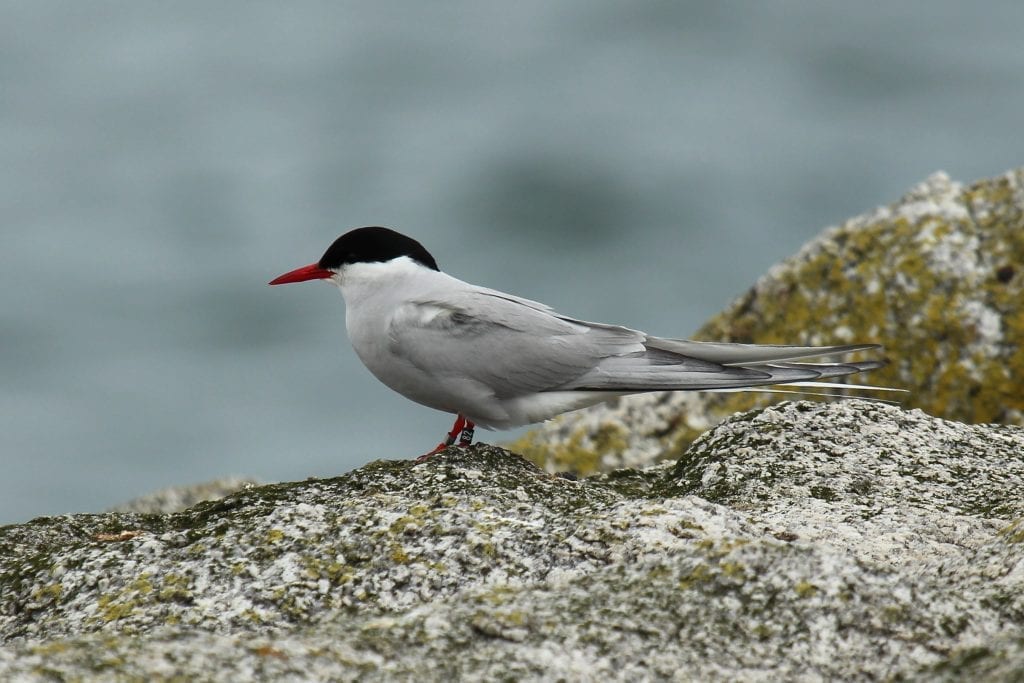 Arctic Tern (Jan Rod)
Arctic Tern (Jan Rod)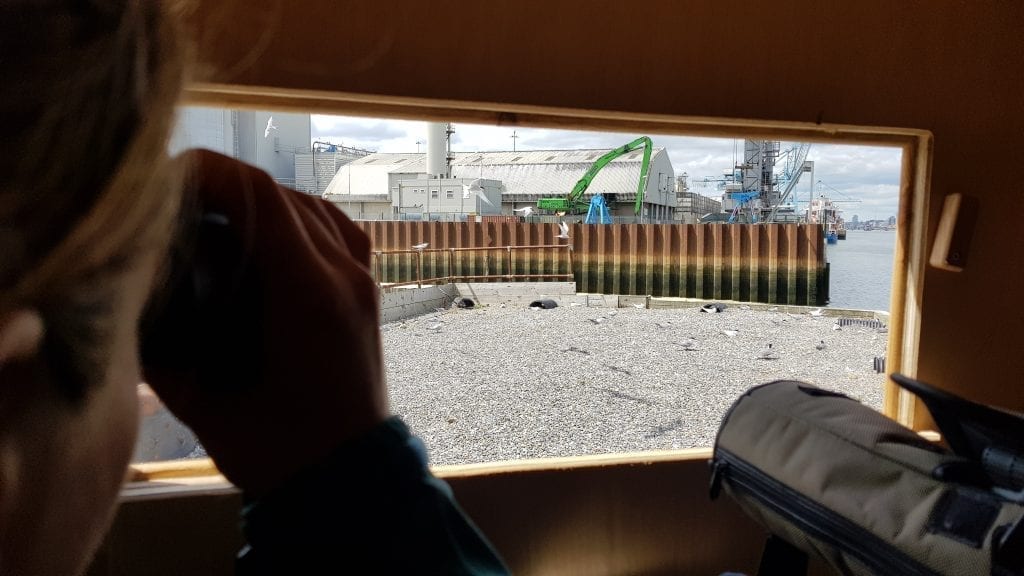 Observation hide on a breeding structure in Dublin Port (Helen Boland)
Observation hide on a breeding structure in Dublin Port (Helen Boland)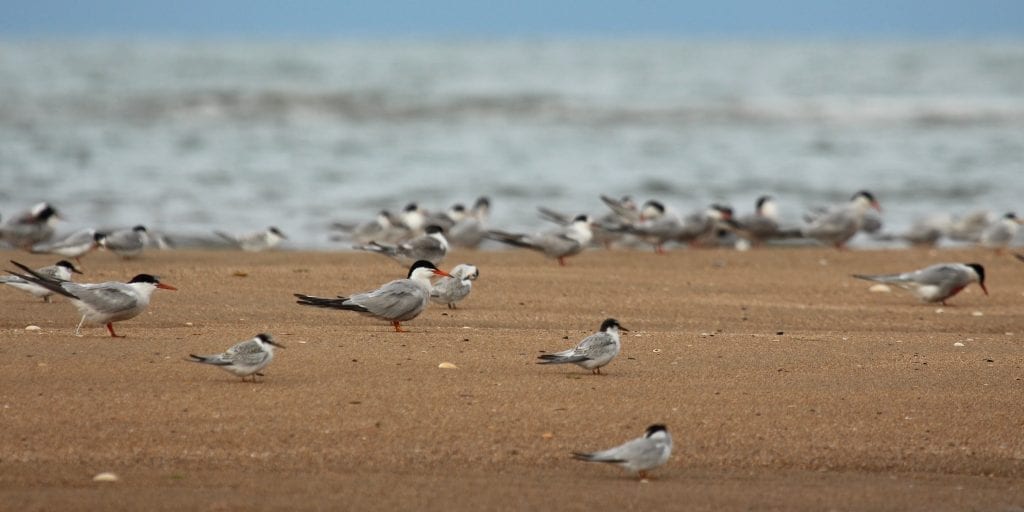 Mixed Common and Little Tern flock (Jan Rod)
Mixed Common and Little Tern flock (Jan Rod)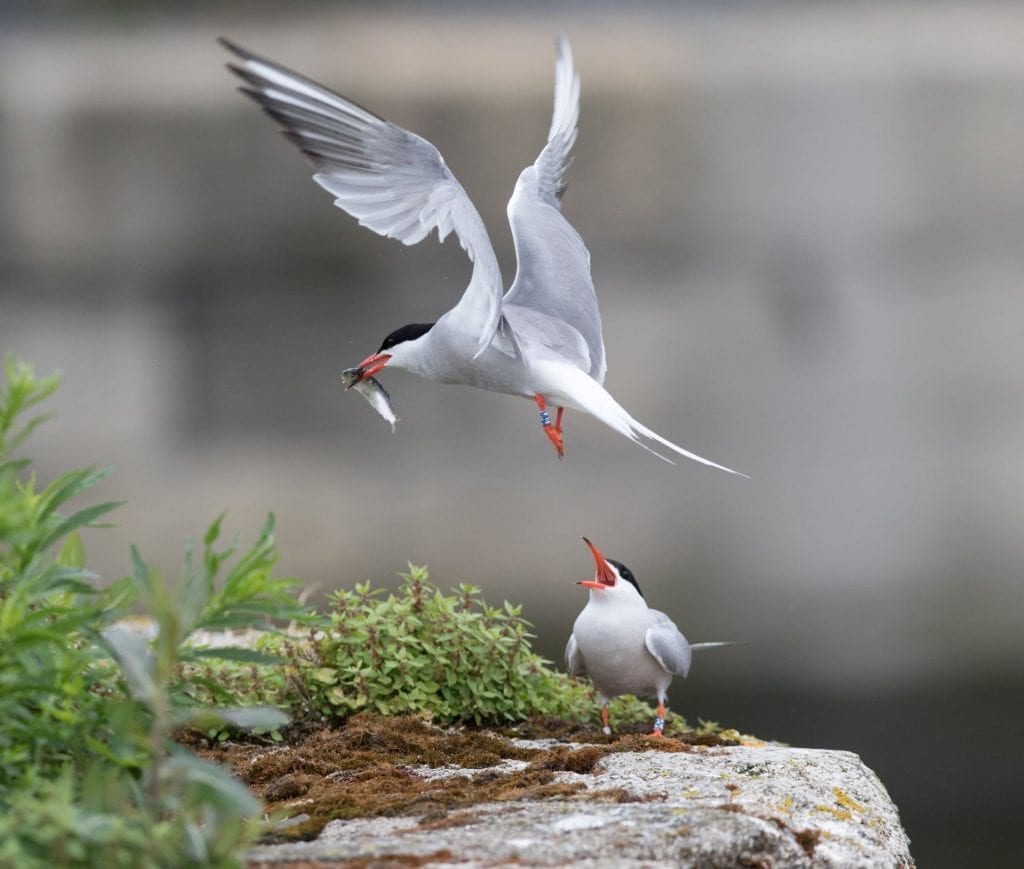 Colour ringed Common Tern pair at Grand Canal Dock (Kevin Maguire)
Colour ringed Common Tern pair at Grand Canal Dock (Kevin Maguire)